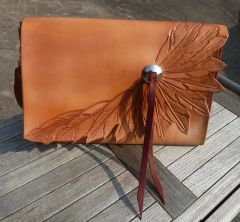-
Posts
5,783 -
Joined
-
Last visited
Content Type
Profiles
Forums
Events
Blogs
Gallery
Everything posted by Constabulary
-
what part is it?
-
Not everybody is in the comfortable situation of being able to pay any price at all times. And I´m sure you know that if you don´t run around blindfolded. "Beating down the price" is a common term or isn´t it? I consider it as an acronym for "negotiating the price". If I used the wrong term - my fault (probably). You really pay any price because of earning respect? Come on... What is a private deal? Some one has something for sale - you need what he has (or just like to have it) - you drive 100 miles - pay the money - drive away - you will probably never see him again - do you really think a private seller cares about who you are or pays you respect because you paid his price? Not really! Within a week or so he even forgot your name! Well - I think its a point of view. There is no right or wrong. You like to pay the full price for some reason - others like to "beat down a price" for some reason. You made your statements and others made theirs. Not worth making a lot of words and TOSSIK already bought a different machine...
-
Oh - I forgot to mention that the needle bar has two timing mark (I hope yours has them). The upper mark should be barely visible in the lowest position of the needle bar and the lower mark should be barely visible when the hook tip meets the needle scarf. But some additional fine tuning may be necessary. Picture 1 shows the lower timing mark in the lowest position of the need bar - upper mark is barely visible (you cant see it on the picture). Picture 2 shows the lower timing mark when the hook meets the needle scarf. Thats the timing my machine works fine with. Hope this helps. Too bad you areon the other side of the pond (I guess) otherwise I´d buy your machine
-
Thanks for your PN but I reply here. Usually you just have loosen the 2 screws on needle bar clamp and adjust the needle bar the way that the hook meets the needle scarf when the needle bar is in the upwards movement. My needle bar moves up approx. 2.5mm - 3mm before the hook tip meet the needle scarf right in the middle of the scarf. Distance between needle and flat side of the hook tip should be as close as possible. At my 133K it is approx. 0.25mm The 133K looks a bit different behind the faceplate but the needle bar should be the same. My 133K was a bit tricky to adjust properly. I just bought it last year and it needed a lot of fine tuning on the distance between hook and needle. I had to adjust some bushings and gears but now it sews very well considering that this beast was made in 1932!!!
-
Looks like a Pfaff 145 or 545, right? There is a screw on the lower right that holds the lever (bobbin case opener). Just loosen it and adjust the lever a little bit. Here is a pic of a 145 I guess your is a 545 with larger hook but it should look the same. Hope this helps
-
I don´t see the problem. Thats really comparing apples with oranges. Why not asking for a better price? It does not matter where or from whom you are buying something. I of course do not ask in the supermarket but in case of a supermarket I could choose where to buy. But when I´m buying "larger goods" or "larger volumes" I often ask for a better price and sometimes I don´t get a better price but at least something on top. Negotiation in trades is a common procedure and thousands of years old. I just can spend my money once and I always try to get the most out of it - just as most of us. This has nothing to do with respect. But I respect your opinion. Good luck!
-
I think it could be something like the MC-SCR system that Sailrite sells - maybe. Not sure if he (Danguman) is using an NPS but you can achieve this one stitch at a time sewing with a servo motor + speed reducer as well.
- 181 replies
-
- diy sewing table
- industrial sewing table
-
(and 3 more)
Tagged with:
-
Thank you! Glad you are pleased and that this nice old thread stand has found a good new home
-
Oh man - TROX - you really have cut this nice Singer stand? I had a bunch of similary ones but really would like to have one or two with SINGER logos like yours. These old cast iron stands are great. I´m using 1 + 1/2 for my machien setup. BTW - you have sold the 105? May I ask how much you got for it? The Danguman has realy cool accessories - have you noticed his patcher machine setup? Check his website: http://www.danguman.com Unfortunately my Japanese is ruted
- 181 replies
-
- diy sewing table
- industrial sewing table
-
(and 3 more)
Tagged with:
-

Recommendation - Jack Jk-561A-1 Servo Motor
Constabulary replied to Constabulary's topic in Leather Sewing Machines
There are for sure better motors than the Jack but as TROX said - you get what you pay for. As an hobbyist I´m please with mine and don´t need all these features but if someone does he should buy a HoHsing or an EFKA. I basically needed s/t that spins my machine -
Sounds like the safety clutch has released. maybe this video is helpful:
-

Recommendation - Jack Jk-561A-1 Servo Motor
Constabulary replied to Constabulary's topic in Leather Sewing Machines
Ho-Hsing are for sure higher end quality motors and are more expensive afaik. But I´m very please with my Jack servo. I don´t really need the NPS but would have been a nice feature though. Still a huge improvement compared with the freaking high speed & energy consuming clutch motors. -

Recommendation - Jack Jk-561A-1 Servo Motor
Constabulary replied to Constabulary's topic in Leather Sewing Machines
yes yes - me native Chinese - no problem - do translate quick and make code list table... **Just kidding** sorry seems I got you wrong in your PN. My motor came with a poor English manual but I have a code list. E5 is an synchronizer error - thats why I said my motor does not work with NPS because of the speed reducer. I also had the E5 with the speed reducer installed. Figured I don´t need the NPS at all so I no longer care about it but here is the error code table from my manual Anyway - still the best servo motor I was able to find on this side of the pond. -

Directions For Timing A Singer 45K25
Constabulary replied to Evo160K's topic in Leather Sewing Machines
uuuuh - looks nice and clean inside - SWEEEET!!! If you don´t mind please post some pictures of your machine.- 21 replies
-
- 45k timing
- 45k25 needle and hook timing
-
(and 1 more)
Tagged with:
-

Directions For Timing A Singer 45K25
Constabulary replied to Evo160K's topic in Leather Sewing Machines
Al, that was a general statement not because you have damaged something. I unfortunately never have seen a service manual for the 45K. Maybe you can take some pictures for documenting your progress. I still have a used needle bar from the 45K I once stripped but mine has neither markings nor a hole. I´d check if the the markings are aligned with parts like screws or other parts at some point so you could use them as reference or timing marks.- 21 replies
-
- 45k timing
- 45k25 needle and hook timing
-
(and 1 more)
Tagged with:
-

Can I Swap Out The Power Switch On My Industial?
Constabulary replied to Wishful's topic in Leather Sewing Machines
I'd probably replace the motor + switch entirely except you are and nostalgic buff I`d assume that the internal wiring is brittle as well. So better safe that sorry. -
I know - I`m from Germany A good source for Pfaff accessories is College sewing in the UK. Where in Serbia do you live? I have been with SFOR on the Balkans in 2000-2001.
-

Chevy Vs Ford?
Constabulary replied to Gregg From Keystone Sewing's topic in Leather Sewing Machines
2006 Mazda 6 Station Wagon - can I play with you guys or am I out? Guess I´m out, right? -
hard to judge all the machines by just seeing the few picture but I can tell you what I would do - I would buy the 1245. The 1246 has an additional puller feed - not sure if you need this - I don´t. The 196 H3 is a double needle machine - not sure if you need this - I don´t. The LH-515 is also a double needle machine and has some extra attachment on the backside (left side) - maybe also a puller feed - I don´t need it. Necchi is a known Italian brand but I guess parts are harder to find than for old Singer 45K machines (at least in my part of the world) - so I would not buy it at all. But that does nor mean it is a bad machine. All are fine machines but it depends on if you need the features they have. So I would buy the 1245 - has compound / triple feed, has a great price & is an up to date model as it seems. I´d add a speed reducer and a new servo motor (or has it one already?) and then I would be good with it. Just my 2 cents - only from examining the pictures and w/o goggling.
-
Well, that is a high speed garment sewing machine not really a leather worker sewing machine. It´s probably fine for thin garment type leather but nothing for heavy work. Since you have the original manual it should give you good instructions and should also show the needle and thread size this machine was made for. It has an oil pump that needs high speed to lubricate the oil spots. Slowing down sewing speed only works with a smaller motor pulley + speed reducer or servo motor + speed reducer. Ceck LW.net for Consew 230: https://www.google.de/search?q=Consew+230&ie=utf-8&oe=utf-8&gws_rd=cr&ei=ouALVeWVKMjxUv3pg_gN#q=Consew+230+site:leatherworker.net I´d sell it and save for a 111 type walking foot machine or s/t similar if you don´t sew thicker than 7-9mm
-

Directions For Timing A Singer 45K25
Constabulary replied to Evo160K's topic in Leather Sewing Machines
Nice description, Amuckart!!!! I absolutely agree that disassembling / reassembling is a good learning but it always depends a lot on what skills you have. And I absolutely understand when someone wants to do it. But be careful.- 21 replies
-
- 45k timing
- 45k25 needle and hook timing
-
(and 1 more)
Tagged with:
-

Directions For Timing A Singer 45K25
Constabulary replied to Evo160K's topic in Leather Sewing Machines
I would not disassemble it when it is sewing - keep it that way. Maybe do some fine tuning of hook / needle bar timing and then it should be good. I´d just thoroughly clean it and oil it well and if necessary give it a new paint job on the outside. Always keep in mind that you probably can damage parts when you disassemble / reassemble it. And you know how hard to find the external parts for the 45K are and the chances are rare that you will find any of the internal parts!!!! And even if you find some it will make the restoration even more expensive. Needle / hook timing is quite an easy task (usually) since the needle is just going up and down and not forwards and backwards (no needle feed). Usually the hook tip should meet the needle scarf about 2.5mm above the needle eye. You just have to loosen the 2 screws on the needle bar clamp and move the needle bar up or down until it meets the scarf.- 21 replies
-
- 45k timing
- 45k25 needle and hook timing
-
(and 1 more)
Tagged with:
-
I just wanted to say that these two parts from College Sewing where crap and all other parts are good! No missing parts! The washer is a bit different... I´d say the 4-1 is a reworked Adler 4-1 with a Singer decal. I don´t think that Singer sold Adler machines at that stage. Singer still sold the 45K89 in the 1960´s as far as I know and the Adler 4-1 w/o reverse would have been a step back. And Adler already had the greenish 104 + 105 on the market
-

messengerbag feathers final
Constabulary commented on Thor's gallery image in Gallery- Our Leatherwork
-
I would buy it but would try to beat down the price a little bit. I have attached a manual for this machine. This Video is quite interesting for you I think - its for the 111w151 (needle feed) but it is very similar to the 111w153 (compound feed / triple feed) 111W152_153_154_155.pdf









